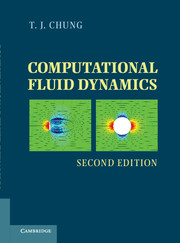Book contents
Preface to the First Edition
Published online by Cambridge University Press: 05 June 2012
Summary
This book is intended for the beginner as well as for the practitioner in computational fluid dynamics (CFD). It includes two major computational methods, namely, finite difference methods (FDM) and finite element methods (FEM) as applied to the numerical solution of fluid dynamics and heat transfer problems. An equal emphasis on both methods is attempted. Such an effort responds to the need that advantages and disadvantages of these two major computational methods be documented and consolidated into a single volume. This is important for a balanced education in the university and for the researcher in industrial applications.
Finite volume methods (FVM), which have been used extensively in recent years, can be formulated from either FDM or FEM. FDM is basically designed for structured grids in general, but is applicable also to unstructured grids by means of FVM. New ideas on formulations and strategies for CFD in terms of FDM, FEM, and FVM continue to emerge, as evidenced in recent journal publications. The reader will find the new developments interesting and beneficial to his or her area of applications. However, the subject material is often inaccessible due to barriers caused by different training backgrounds. Therefore, in this book, the relationship among all currently available computational methods is clarified and brought to a proper perspective.
Information
- Type
- Chapter
- Information
- Computational Fluid Dynamics , pp. xix - xxiPublisher: Cambridge University PressPrint publication year: 2010
